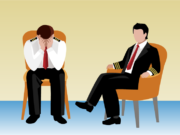After airline risk assessments found that requiring two crewmembers in the cockpit at all times during flights “introduced unintended consequential risks,” Australia’s Civil Aviation Safety Authority (CASA) has advised that carriers should decide on their own whether to maintain the practice.
In a CASA Briefing published online in late July, the agency said, “Operators should take an operational approach to maintaining the so-called ‘two in the cockpit’ practice.” CASA also said that such an approach is in line with the position taken by the European Aviation Safety Agency (EASA), which revised its post-Germanwings guidance to carriers two years ago.
On March 24, 2015, the co-pilot of Germanwings Flight 9525, operated with an Airbus A320 with 144 passengers and five crew on board, intentionally crashed the airplane in the French Alps during a scheduled flight from Barcelona, Spain, to Dusseldorf, Germany. In its final report on the accident, the French Bureau d’Enquêtes et d’Analyses said that “the collision with the ground was due to the deliberate and planned action of the co-pilot, who decided to commit suicide while alone in the cockpit.”
Shortly after the accident, Australian carriers operating aircraft with a seating capacity of more than 50 passengers agreed with the government to take a precautionary approach and to update and implement standard operating procedures (SOPs) to require two members of the operating crew or authorized persons on the flight deck at all times.
In a July 17, 2018, letter to the Australian Airlines Pilots’ Association, Rob Walker, executive manager stakeholder engagement at CASA, said the agency has considered advice received from airlines and pilot unions recommending that the policy be rescinded to remove unnecessary risks. According to Walker’s letter, detailed airline risk assessments found that the policy:
- Did not provide any additional reduction in risk and had a limited deterrent effect;
- Heightened existing risks both to security and the physiological state of the flight crew;
- Introduced unintended consequential risks, including the second person possibly distracting the pilot, making inadvertent contact with the cockpit switches and limiting cabin crew time in the cabin, affecting their safety role;
- Complicated flight crew access and introduced additional risk of flight deck incursion; and,
- Created an additional role and stress for cabin crew, with a risk of overreaction in the absence of knowledge of flight crew and aircraft control procedures.
The assessments found that the policy provided some potential mitigation in the event of the pilot remaining in the cockpit becoming medically incapacitated, but that this was outweighed by the outlined consequential risks, CASA said.
“In light of this advice and developments overseas, in particular, action by [EASA] taking a more flexible risk-based approach which allows operators to evaluate their own safety requirements, CASA considers that the most practical way forward for operators is to adopt the EASA approach … then evaluate their own safety requirements and make an operational decision on whether to maintain ‘two in the cockpit’” in their SOPs, Walker said.
CASA said that its aviation medical branch will continue to monitor pilot mental health and maintain a high level of awareness among pilots of mental health priorities and sources of assistance.
The EASA action referenced by Walker was a revised EASA Safety Information Bulletin (SIB) on Minimum Cockpit Occupancy that was issued in July 2016. The original SIB, which recommended that operators implement procedures requiring at least two authorized persons to be in the cockpit at all times, was issued on March 27, 2015, three days after the Germanwings accident. In the revised SIB (2016-09), EASA recommends that a risk assessment is performed and then, based on the results of the assessment, the operator may decide to maintain the two-persons-in-the-cockpit procedure as one possible mitigating measure.
The revised SIB provides guidance on the elements to be considered in the performing the risk assessment, including:
- The operator’s psychological and security screening policy of flight crews;
- Employment stability and turnover rate of flight crews;
- Access to a support program, providing psychological support and relief to flight crew when needed; and,
- Ability of the operator’s management system to mitigate psychological and social risks.
The revised SIB also includes several recommendations for carriers if they decide to maintain the two-crew requirement, including that the role of the authorized person entering the cockpit is clearly defined and that his or her main task should be to open the cockpit door when the pilot returns; that only qualified personnel sit at the airplane’s controls; and that training needs are identified and addressed.


